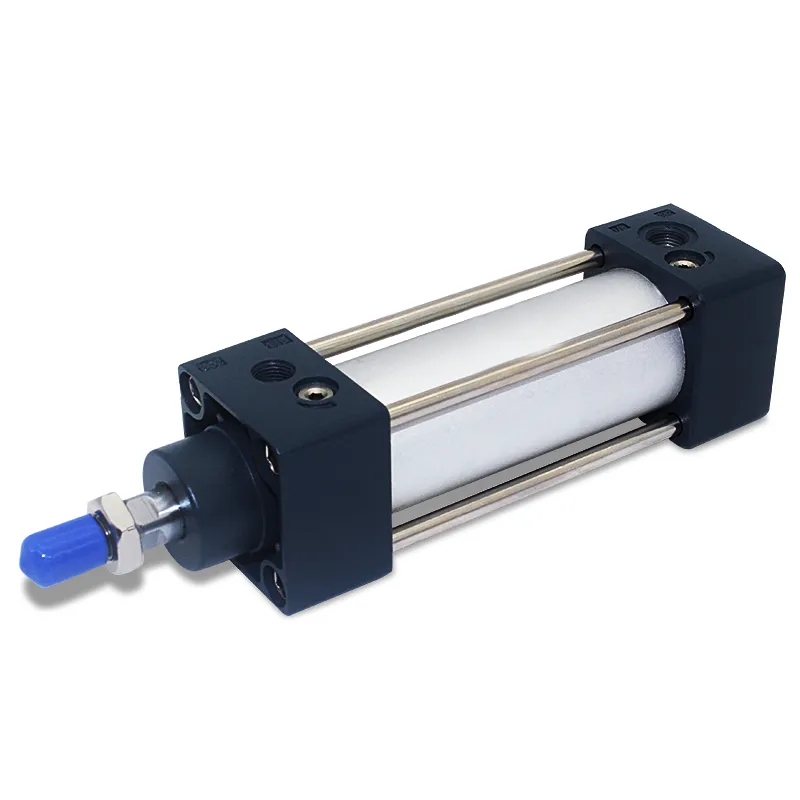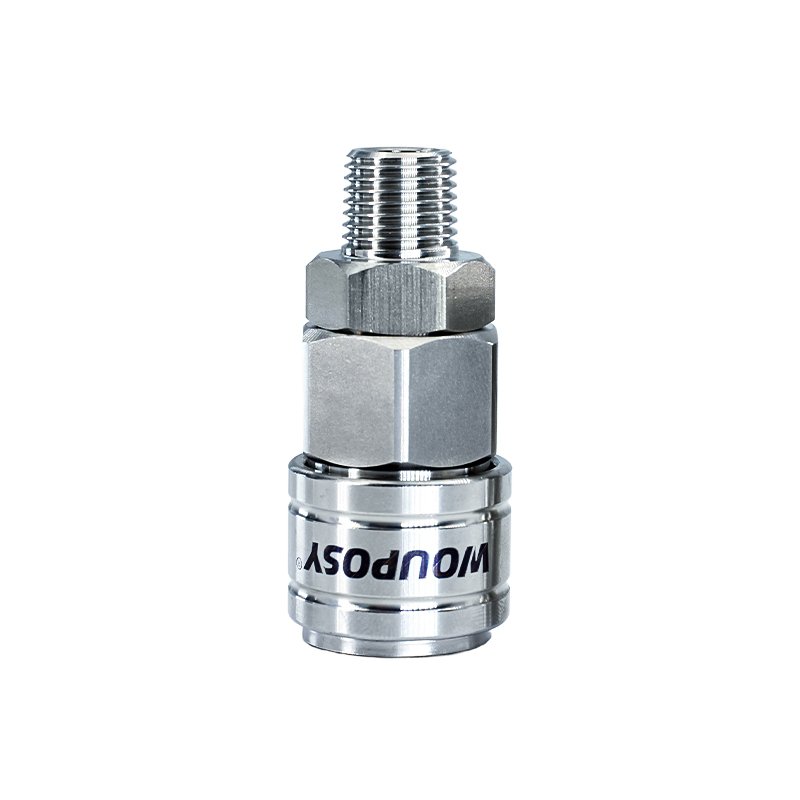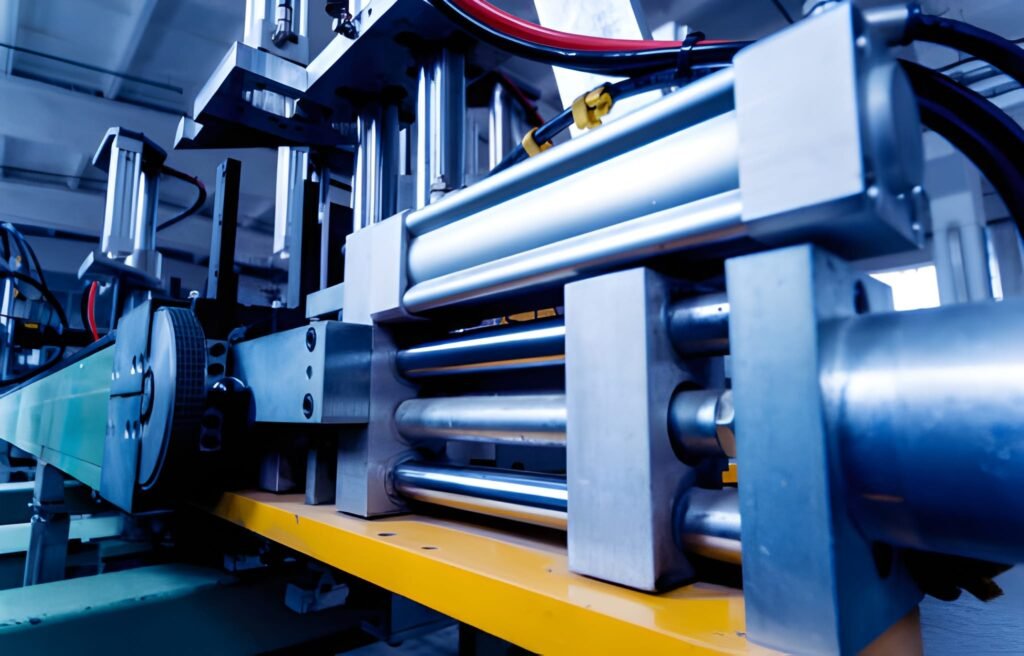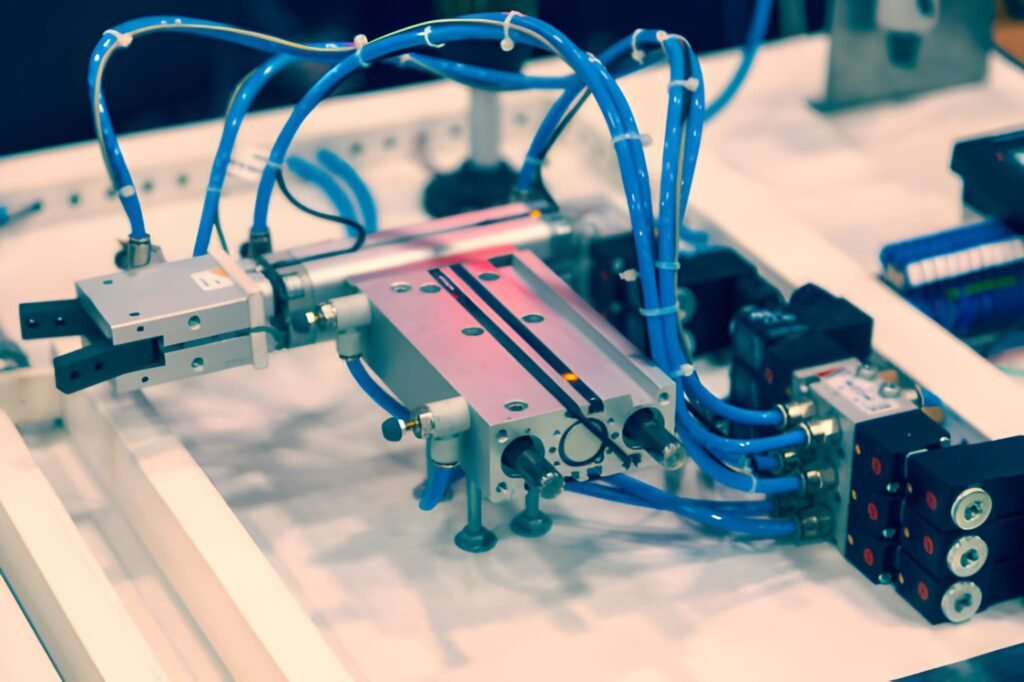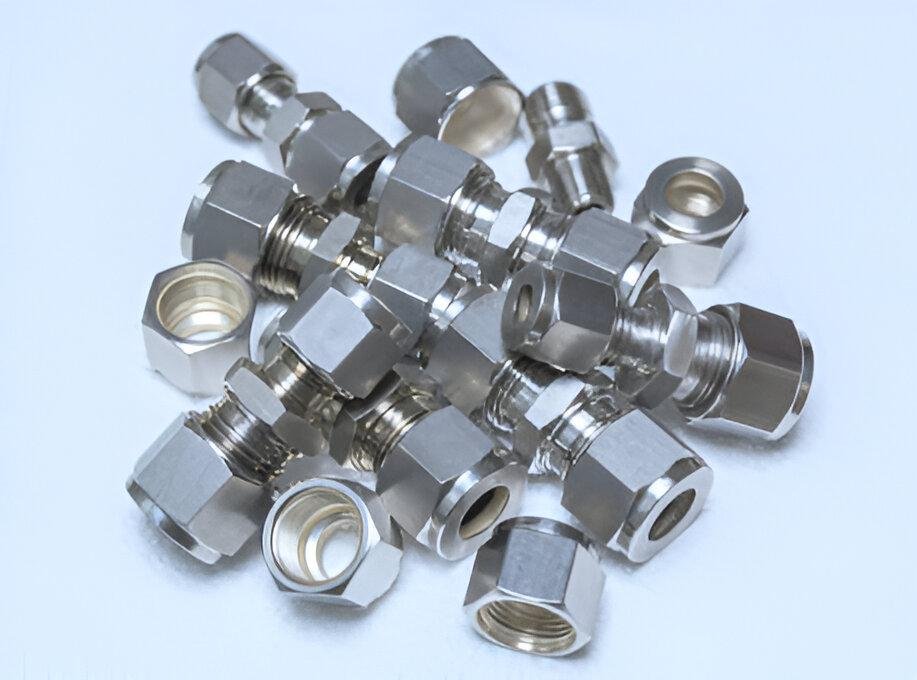Brief introduction to mini cylinders and their importance in various industries” content
Mini cylinders, a type of compact pneumatic actuator, play a vital role in modern industrial automation due to their unique small size and high efficiency capabilities. This device uses compressed air to generate power, drive mechanical movement or control various operations. Mini cylinders are designed to meet applications where space is limited and precise control is required, making them an integral part of many industries.
In manufacturing, mini cylinders are widely used in automated production lines, especially where precision assembly, positioning or rapid movement of small parts is required. Their high speed and accuracy increase production efficiency while reducing production costs and labor requirements. Mini cylinders also play a key role in medical device manufacturing, such as in automated drug dispensing systems and various diagnostic instruments, ensuring the accuracy and reliability of operations.
In addition, mini cylinders are also used in product assembly processes in the electronics industry, providing the necessary fine control when handling tiny and sensitive electronic components. In automotive manufacturing, mini cylinders are used to perform precise assembly tasks such as mounting small parts, as well as during testing and quality control.
In addition to the areas mentioned above, mini cylinders are also used in packaging processes in the food and beverage industry, in laboratory automation and in the development of special machinery such as robotics and mobile equipment. Their wide range of applications and diverse functions reflect the irreplaceable importance of mini cylinders in modern industry. Through continuous technological innovation, mini cylinders are becoming more intelligent and efficient, meeting the growing needs of automation and precision manufacturing.

Mini cylinder overview
Mini cylinder is a small pneumatic actuator mainly used to generate linear motion and force. These devices use the power of compressed air to achieve precise motion control, especially in applications where space is limited or high-precision operations are required.
1.Basic working principle and structure
The basic structure of a mini cylinder includes a cylinder block, a piston, a piston rod, seals and an end cover. During operation, compressed air enters the cylinder body through the inlet, pushing the piston to move along the cylinder body, and then driving the piston rod to perform linear motion. By controlling the inflow and exhaust of air, the mini cylinder can achieve forward and backward movements to complete various mechanical tasks such as pushing, pulling, lifting and positioning.
2. Different types of mini cylinders and their characteristics
Mini cylinders can be divided into various types based on their design and application requirements:
- Standard mini cylinder: This is the most common type, suitable for most standard applications and characterized by simple structure and low cost.
- Double-acting mini cylinder: capable of performing work in both directions, suitable for applications requiring two-way control.
- Single-acting mini cylinder: It can only push or pull in one direction. It usually uses spring return and is suitable for occasions with small force requirements.
- Rodless mini cylinder: Instead of using a traditional piston rod, magnetic force or other mechanisms are used to transmit force. It is suitable for applications where external leakage needs to be avoided or space is extremely limited.
3. Comparison between mini cylinder and other cylinder technologies
Compared with traditional cylinders, mini cylinders have several significant advantages:
- Size: The smaller size of the mini cylinder makes it suitable for use in space-constrained environments.
- Weight: The low weight makes the mini cylinder suitable for portable equipment and applications.
- Precision: High-precision control is an important feature of mini cylinders, especially suitable for automation applications that require delicate operations.
- Installation flexibility: The design of the mini cylinder allows installation in a variety of different positions and orientations, providing greater application flexibility.
Technical advantages of mini cylinders
Mini cylinders occupy an important position in the field of modern industrial automation with their unique technical characteristics and advantages. These advantages include:
- High-precision control: Mini cylinders are able to provide very precise motion control, which is especially important for applications that require delicate operations. By precisely controlling the flow and pressure of compressed air, the mini cylinder can achieve tiny displacements to meet high-precision positioning requirements.
- Compact design: The mini cylinder’s small size allows it to be easily installed in space-constrained environments. This compact design is a major technical advantage of the mini cylinder, which is especially suitable for applications that have strict requirements on equipment size.
- Energy saving and high efficiency: Compared with other driving methods, the mini cylinder can provide the required power and speed while consuming less energy due to its optimized design and operating efficiency. This not only helps reduce operating costs, but also conforms to the current trend of energy conservation and emission reduction.
- Reliability and durability: The mini cylinder has a simple structure and a small number of parts, which reduces failure points and thus improves the reliability and durability of the equipment. In addition, the working environment of the pneumatic system is relatively mild, causing little wear and tear on the equipment, further extending the service life of the mini cylinder.
- Easy to maintain: Mini cylinders are relatively simple to maintain and repair, and some models can even be maintained without disassembling the entire system. This reduces maintenance costs and ensures the equipment is back up and running quickly.
- Environmental adaptability: Mini cylinders can work stably in a wide range of environmental conditions, including high and low temperatures, dusty environments, and humid conditions. This environmental adaptability makes the mini cylinder suitable for a variety of harsh industrial applications.
- Fast response: The mini cylinder responds quickly and can reach the working state from a static state in a very short time, which is crucial for improving the efficiency of the production line and reducing cycle time.
- Cost-Effectiveness: Considering its high efficiency, low maintenance costs, and long-term durability, mini cylinders offer a good cost-benefit ratio in many applications, especially in production environments that require large amounts of automated equipment.

Application cases of mini cylinders
Mini cylinders play an important role in numerous industries due to their compactness, efficiency and reliability. The following are some specific application cases of mini cylinders, showing how they solve practical problems in different fields:
1. Automated production line
In automated production lines, mini cylinders are used to perform precision assembly, positioning and handling tasks. For example, in electronics manufacturing, mini cylinders can be used to precisely place and mount small electronic components such as chips and circuit boards. Its high precision and fast response characteristics ensure high efficiency of the production process and product quality.
2. Medical devices
In the medical industry, mini cylinders are widely used in various medical equipment, such as automated drug dispensing systems, mobile diagnostic equipment, and surgical aids. Their small size and precise control capabilities allow these devices to work efficiently in space-constrained environments, improving the safety and accuracy of medical operations.
3. Electronic equipment assembly
Mini cylinders are used in electronics manufacturing to perform extremely delicate assembly work. They enable precise control over the placement of components such as tiny screws or components in smartphones, tablets and laptops. This kind of precision is crucial to ensure high quality and performance of electronic products.
4. Laboratory automation
In laboratory automation, mini-cylinders are used to control precise fluid dynamics in applications such as automated sample handling, liquid dispensing and micro-injection. These applications require extremely high precision and repeatability, and the reliability and precise control of the mini cylinder ensure the efficiency and accuracy of laboratory work.
5. Special vehicles
Mini cylinders are also used in the design of special vehicles such as fire trucks and ambulances. They are used to control complex mechanical devices on the vehicle, such as folding ladders and the deployment and stowage of rescue equipment. The powerful driving force and compact design of the mini cylinder enable these vehicles to operate quickly and efficiently in emergency situations.
6. Food and beverage packaging
In the food and beverage industry, mini cylinders are used to control precise movements on packaging lines, such as tightening bottle caps, cutting packaging materials and sorting finished products. Their quick response and high efficiency ensure the continuity of the packaging process and high throughput of the production line.
Criteria and considerations for choosing the right mini cylinder
- Load requirements: Evaluate the required thrust and pull forces and select the cylinder that can meet the maximum load requirements.
- Stroke length: Determine the distance the cylinder needs to move and ensure sufficient stroke length is taken into account when selecting.
- Operating speed: Select the appropriate cylinder based on the speed requirements of the application, taking into account the cylinder’s response time and frequency of operation.
- Working environment: Consider the environment in which the cylinder will work, including temperature, humidity, dust, chemicals, etc., and select cylinder materials and seals suitable for specific environmental conditions.
- Installation space: Measure the available installation space and choose a mini cylinder of appropriate size to avoid insufficient space during installation.
- Action type: Choose the most suitable mini cylinder type according to the required action type (single action or double action) and whether the speed adjustment function is required.
Installation and maintenance recommendations
- Proper installation: Follow the manufacturer’s installation guidelines to ensure the cylinder is properly connected to the air source and control system. Incorrect installation may result in reduced performance or even damage to the cylinder.
- Regular Inspections: Regularly check the seals and connections of the cylinder to prevent leakage and wear. Check for loose parts or unusual wear.
- Cleaning and Lubrication: Keep the inside and outside of the cylinder clean and lubricate moving parts regularly (if recommended by the manufacturer) to maintain optimal performance and extend service life.
- Avoid overloading: Do not exceed the maximum load and speed limits of the cylinder, which may cause damage to the cylinder.
Mini Cylinder FAQ
Q: What is the difference between mini cylinder and standard cylinder?
A: The main difference between mini cylinders and standard cylinders is size and applicable occasions. Mini cylinders are smaller and lighter, making them ideal for applications with limited space or strict weight requirements. While mini cylinders may not have the same load capacity as standard cylinders, they perform well in environments that require high precision and high-speed operation.
Q: How to choose the right mini cylinder?
A: Selecting the correct mini cylinder requires consideration of several factors, including load requirements, stroke length, working environment, installation space, type of action (single action or double action), and whether specific speed or force control is required. After clarifying these needs, you can refer to the manufacturer’s product specifications to select the most suitable mini cylinder.
Q: Can the mini cylinder work in high temperature environment?
A: Whether the mini cylinder can work in high temperature environment depends on its material and design. Some mini cylinders are designed with high-temperature durable materials and can work stably at higher temperatures. When selecting a cylinder, its temperature specifications should be checked to ensure that it meets the requirements of the application environment.
Q: What should I pay attention to when maintaining a mini cylinder?
A: Mini cylinder maintenance mainly includes regular inspection of seals and connections, keeping the inside and outside of the cylinder clean, regular lubrication (if recommended by the manufacturer), and avoiding overloading. Regular maintenance can help extend the life of your cylinder and maintain its performance.
Q: Can the response speed of the mini cylinder be adjusted?
A: Yes, the design of many mini cylinders allows the response speed to be adjusted by adjusting the flow of intake and exhaust air. Using a flow control valve is a common method of achieving this adjustment. Adjusting the flow rate optimizes the speed and smoothness of the cylinder’s action based on application needs.
Q: How to diagnose and repair the mini cylinder when it fails?
A: Trouble diagnosis should start with checking the air source pressure and the air line connection of the cylinder to confirm that there are no leaks or blockages. Check that the electrical control system is configured and functioning correctly. If the problem persists, check the piston and seals inside the cylinder for wear or damage and replace as necessary. For complex failures, it may be necessary to contact the manufacturer or professional technicians for assistance.
Q: How to prevent the mini cylinder from leaking during use?
A: The key to preventing mini cylinder leaks is to ensure that all connections are installed and tightened correctly, and to regularly inspect and replace worn seals. Using high-quality connections and sealing materials will also help reduce the risk of leaks. Proper installation and maintenance are the basis for preventing leaks.
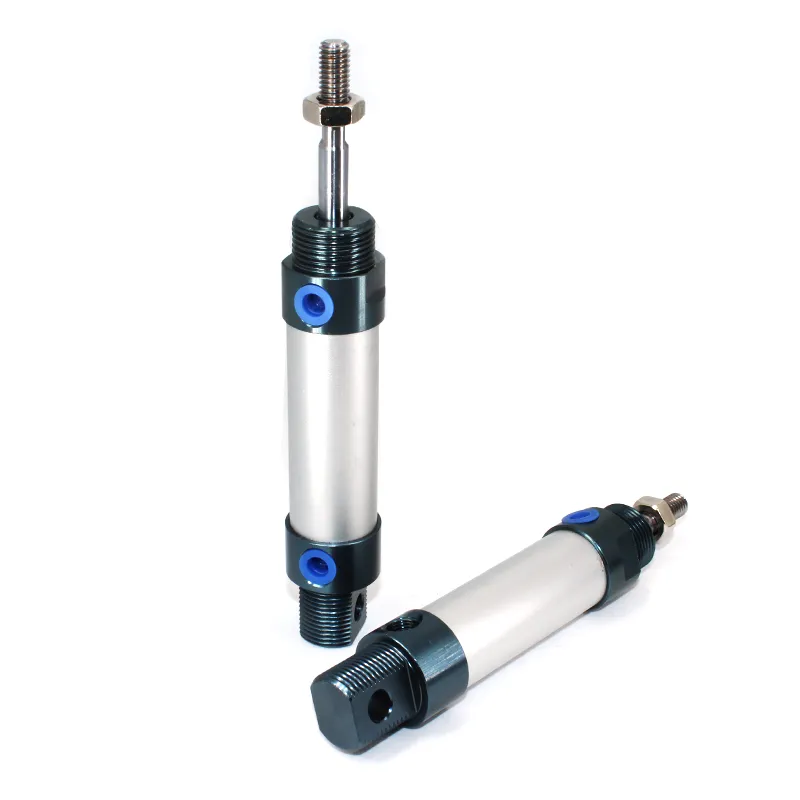
Conclusion
As a key component in modern industrial automation systems, mini cylinders provide efficient and precise solutions for a variety of application fields through their compact design, high-precision control capabilities and reliability. From automated production lines, medical devices, and electronic equipment assembly to laboratory automation and special vehicle applications, the flexibility and high performance of mini cylinders make them ideal for optimizing workflows, improving production efficiency, and ensuring operational accuracy.
Choosing a suitable mini cylinder requires considering multiple factors such as load requirements, stroke length, working speed, working environment, installation space and type of action to ensure that the selected cylinder is perfectly adapted to the specific application needs. Proper installation and regular maintenance are key to keeping your mini cylinder operating efficiently and extending its service life.
Facing the future, with the continuous advancement and innovation of technology, we can foresee that mini cylinders will incorporate more intelligent features and environmentally friendly materials to meet the growing automation needs and sustainable development goals. The technical advantages and wide application of mini cylinders demonstrate its important role in promoting industrial automation and improving manufacturing productivity. With the deepening of research and development and the expansion of applications, mini cylinders will continue to play a core role in future industrial development.

